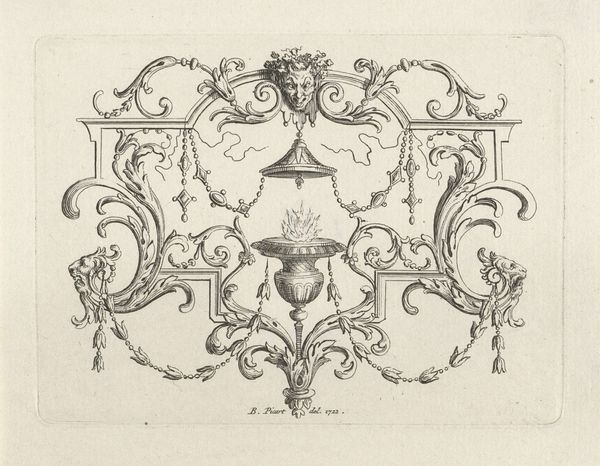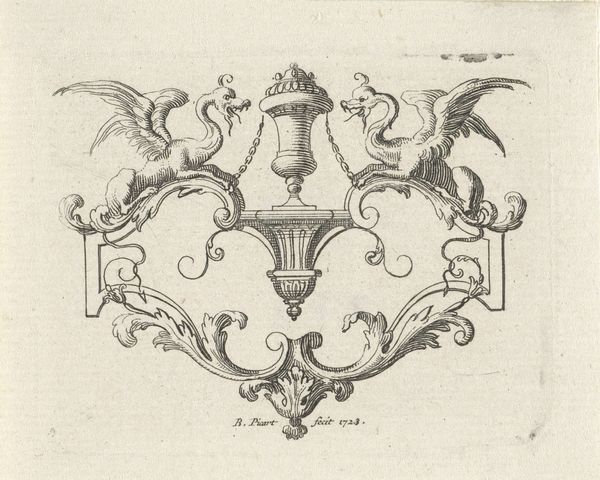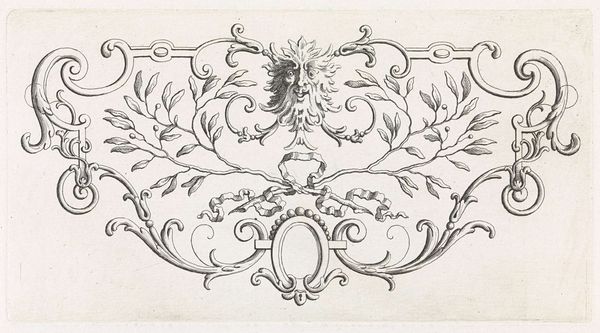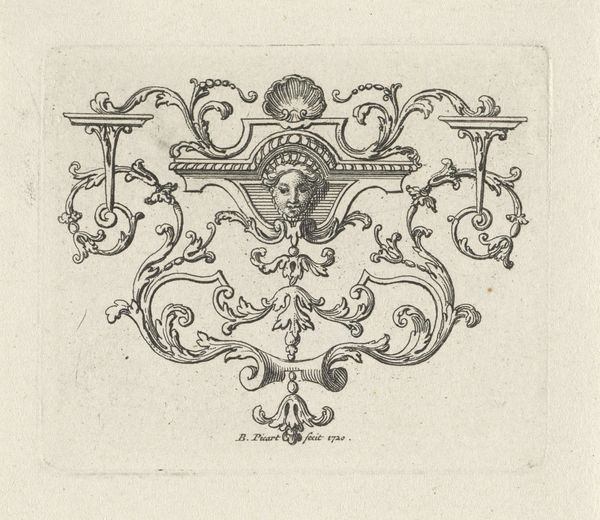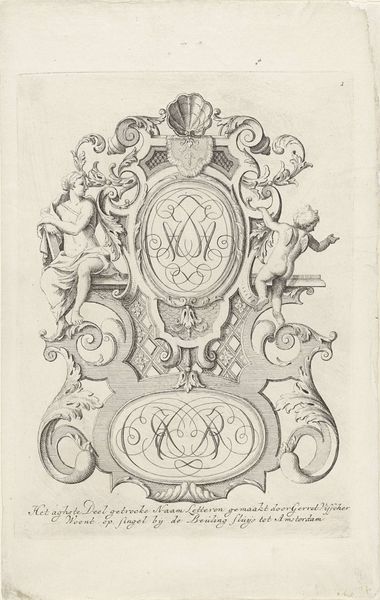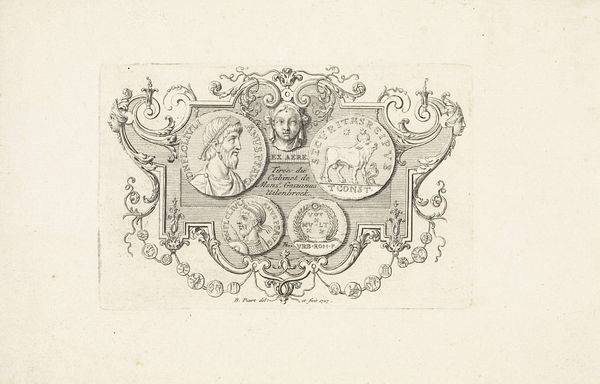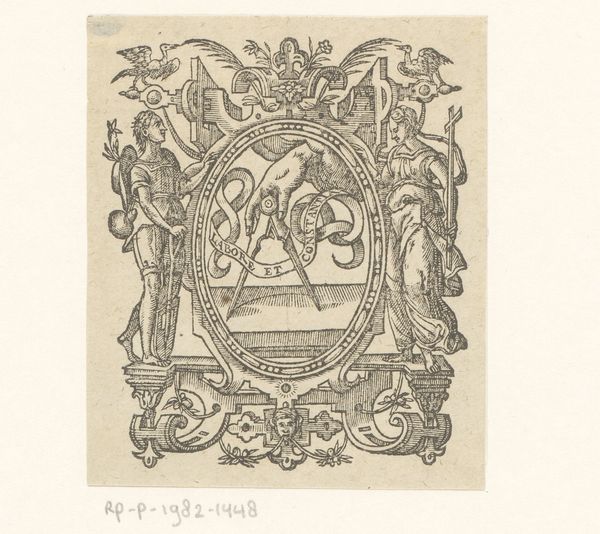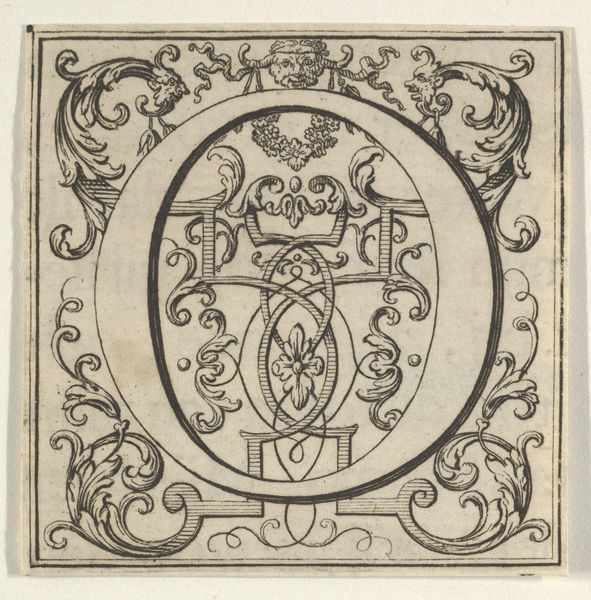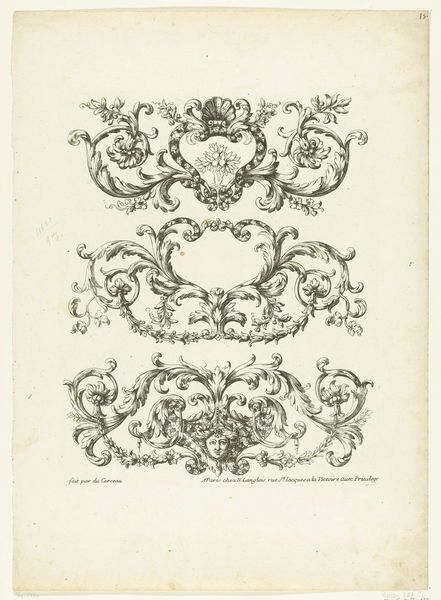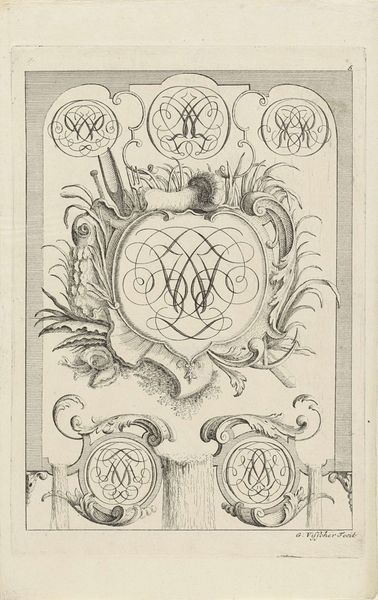
drawing, print, ink, engraving
#
drawing
#
baroque
# print
#
ink
#
engraving
Dimensions: height 104 mm, width 164 mm
Copyright: Rijks Museum: Open Domain
Editor: This is "Vignet met monogram," a drawing and print from 1723 by Bernard Picart. It is made with ink and engraving. All the swirling, symmetrical lines are dizzying but intriguing. What do you see in this piece, especially concerning its structure? Curator: The strength of this work lies in its intricate play of form. Observe how Picart orchestrates a balance between the rigidity of geometric shapes and the fluidity of Baroque curves. The central monogram, encased in a shield-like form, becomes a focal point due to its relative simplicity amidst the ornate surroundings. Do you notice how the dragons flanking the shield contribute to this tension? Editor: Yes, I see that! They definitely amplify the complexity. But why dragons? Curator: Within a formalist lens, the symbolism is secondary to their role as compositional elements. The dragons, with their dynamic poses and textured wings, introduce a visual counterpoint to the static symmetry of the shield. Their presence activates the space around the central emblem. Consider, also, the impact of line. Notice the incredibly fine detail achieved through the engraving. The variation in line weight and density creates depth and shadow, animating the entire design. What do you make of the relationship between the negative space and the filled areas? Editor: I see what you mean. The open space around the monogram allows the eye to rest before being drawn back into the detailed patterns. It is like a visual breath. I now perceive how all these separate formal elements play into one unified expression. Curator: Precisely. Appreciating how the artist manipulates these visual components offers us a direct route to understanding the inherent qualities and strengths of the artwork. Editor: I am starting to grasp the power of simply looking at the composition. Thank you for shedding light on how to analyze it effectively.
Comments
No comments
Be the first to comment and join the conversation on the ultimate creative platform.
